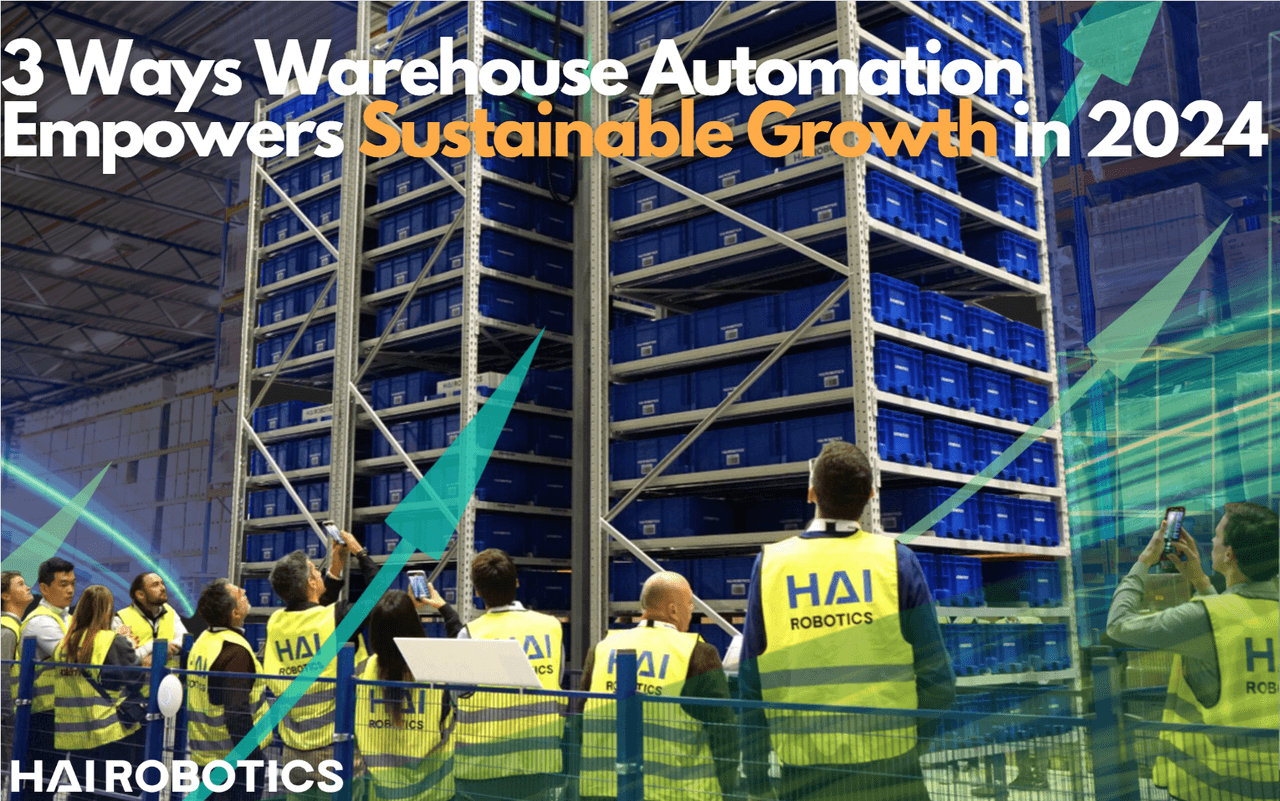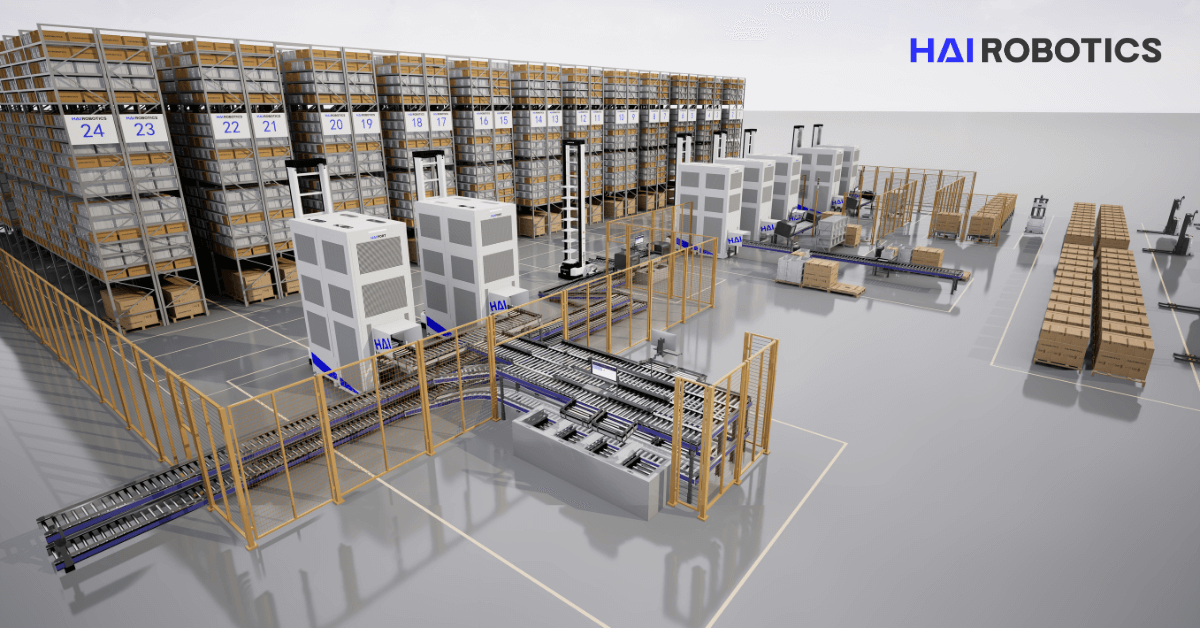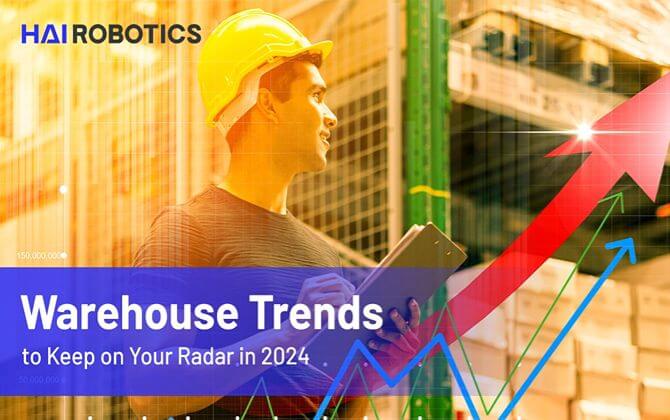3 Ways Warehouse Automation Empowers Sustainable Growth in 2024
Introduction:
Sustainable growth isn't an empty buzzword for companies going into 2024.
It has become an explicit business goal for many global companies to identify emerging markets and which ones are evolving to best suit their industry strengths. On top of growth, companies are prioritizing increasing their ESG ratings. This is in part due to the trend that companies that have high ESG ratings consistently outperform the market in both the medium and long term.¹
For a multitude of industries, maintaining profitability and expanding operations while carefully considering positive ESG impacts can be more easily achieved with proper warehouse automation solutions.
Warehouse automation empowers companies not just within the four walls of a warehouse, but has significant ripple effects throughout the supply chain and business operations.
Below we have outlined three critical factors behind the benefits of upgrading traditional manual warehouses with modern automation technologies.

Long-term Sustainability
"Doing well and doing good are intertwined, and successful business strategies include both."-Harvard Business School Professor Rebecca Henderson.²
Sustainability is a vital component of business success for almost all industries, including retail and logistics.
"80% of companies say that reducing CO2 emissions in the next five years is a key focus area... with 12% of companies believing that the biggest impact can be made in warehousing" according to the 2022 European Logistics and Supply Chain Sustainability Report.
With 66% of 3pls having won new business as a result of their strong ESG practices, industry leaders need to keep their finger on the pulse of ESG strategies. Not only is lowering carbon emissions an essential component of long-term sustainability, but also an increasingly vital component of winning projects and customers.³
Warehouse automation solutions, such as Automated Case-handling Robots (ACRs) and Automated Mobile Robots (AMRs) can achieve both short and long-term sustainability goals such as efficient use of energy, lower energy consumption, a smaller carbon footprint, and reduced operating costs. As well as improving operational accuracy, the chance of damage is greatly reduced, which helps reduce costly material waste.
In a study conducted by MIT, their "research confirmed...that full end-to-end automation in standalone fulfillment centers would reduce the environmental impact in terms of carbon emissions".⁴
Furthermore, automated warehouses can offer superior containment properties, such as climate control systems which promote better maintenance of goods and reduce utility waste.
Fast Scale-up
Forbes' article on warehouse automation puts it perfectly—
"Just as the companies that had previously automated their e-commerce function performed most successfully during the pandemic, the warehouse automation’s early adopters will reap the most gains by operationalizing the best solutions."⁵
Retail and logistics companies don’t have to waste time and money, or sacrifice sustainability goals by expanding warehouse space, and establishing multiple distribution centers to handle more goods at faster speeds.
“The truth is that any business which has a warehouse should be looking to automate, even if the scale of the operation dictates that this should be a semi-automated pallet wrapper rather than an all-singing and dancing robot,” stated George Thompson, chair of the British Automation and Robot Association (BARA) in an interview with Raconteur.⁶ When consumer demand soars and a scale-up is required, warehouse automation solutions with integrated intelligent software platforms can help companies adapt to scale up and down to respond to changes in consumer demand quickly. Automated systems can also be easily deployed in a small section of the warehouse and scaled up to a larger installation as demand grows over the long term or during hectic holidays.
"The time horizon on these investments will depend on the company’s return on invested capital requirements.", states a Deloitte whitepaper on automation robots driving the supply chain. The cost of robots, other equipment, and production costs also become increasingly affordable which erodes friction and barriers for growing companies to become competitive in supply chain optimization.
The benefits of flexible warehouse automation for sustainably scaled growth is also a key point of the whitepaper's findings—"as operations expand, companies can continue to strategically add autonomous robots to complement business growth and support evolving."⁷
By harnessing the benefits of flexible and scalable warehouse automation businesses can not only reach their sustainability goals but also manage the pace of their growth to match their own market demands.

Higher Operational Resilience
"Leading retailers are aiming to make warehouses responsive, resilient, and reliable to accommodate the ever-growing e-commerce market." According to a 2021 McKinsey study on Automation for Omnichannel warehouses.⁸
Highly automated warehouses powered by goods-to-person Automated Storage and Retrieval Systems (ASRS) are not only more reliable, but they’re also more resilient to unexpected changes.
When demand for consumer goods surges, many warehouses struggle to keep up. This occurs with large multinational companies but is also exceptionally crucial for small to medium-sized enterprises.
"By automating your warehouse, you’ll know precisely in which warehouse certain products are located so you can move your items within schedule and under budget," says Mark Allinson from Robotics and Automation News.⁹
Warehouse automation can help make supply chains more agile and resilient by improving the accuracy and timeliness of product information.
It also lessens the need to rigidly adhere to updated safety and sanitation measures for manual warehouses by having robots perform more arduous or potentially dangerous tasks.
Yet, our valued partner, Korber acutely points out that to become more resilient in the face of supply chain disruptions, economic uncertainty, or fluctuations in consumer demand, businesses need to "rethink warehouse set-ups and supply chain practices," and make sure that they select the correct automation vendor to "help create the next generation of supply chain ecosystems."¹⁰
McKinsey's analysis cuts to the chase—"The long-term implications of a high reliance on labor are clear: automation in warehousing is no longer just nice to have but an imperative for sustainable growth."¹¹
Conclusion
Additionally, advanced warehouse automation enables fast scale-up, allowing companies to become more agile. Adapting to changes in consumer demand quickly and efficiently allows companies to support full supply chain optimization to stay ahead of their competitors.
Effective use of scalable warehouse automation also greatly reduces the need for excessive, unused warehouse space and gives companies the grace to expand their real-estate footprint only when are ready to make that leap.
The data transparency implemented by the digitization of storage facilities can help align multiple distribution centers, saving time and money by coordinating their supply chains, which also maintains sustainability goals.
Lastly, automated warehouses enhance operational resilience by making supply chains more agile and reliable, especially in the face of unexpected changes. Overall, warehouse automation is no longer just a luxury but a necessity for companies seeking sustainable growth in the modern business landscape.
For more guidance on finding the most efficient, bespoke warehouse automation options for you, click here .
Footnotes
1) Bonini, Sheila, and Steven Swartz. 2014. “Profits with Purpose: How Organizing for Sustainability Can Benefit the Bottom Line.”
2) Chladek, Natalie. 2019. “The Importance of Business Sustainability Strategies.” Harvard Business School Online. November 6, 2019.
3) Analytiqa (2022). "European Logistics & Supply Chain Sustainability Report 2022."
4) Peterson, Taylor, et al. "Quantifying Warehouse Automation and Sustainability." MASSACHUSETTS INSTITUTE OF TECHNOLOGY, May 2022.
5) Stirewalt, Jim. “Council Post: The Big Confluence: Why Warehouse Automation Now.” Forbes, 1 Dec. 2022.
6) Matthews, Virginia. “The Time Has Come for SMEs to Embrace Warehouse Automation.” Raconteur, 21 Sept. 2022.
7) Fitzgerald, Joseph, and Evan Quansey. "Using Autonomous Robots to Drive Supply Chain Innovation." 2017.
8,11) Barbee, John, and Alan Davies. “Optimizing Warehouse Automation for Retailers | McKinsey.” Www.mckinsey.com, McKinsey & Company, 27 Dec. 2021.
9) Allinson, Mark. “Why Use Automated Warehousing for Your Small Business.” Robotics & Automation News, 4 June 2021.
10) “Increasing Resiliency in the Supply Chain with Automation.” Körber Supply Chain, 19 Jan. 2021.

